Welcome to a guide on the different types of computer speakers. Yes, it is confusing these days. There are speakers of all kinds of shapes, sizes, and functions. Just what are the various kinds of speakers, what are their differences, what are their advantages and disadvantages? Read on to find out!
TABLE OF CONTENTS
 Types of Speakers Types of Speakers |
 Speaker Anatomy Speaker Anatomy |
 Useful Bits Useful Bits |
 The End The End |
TYPES OF SPEAKERS

Just what are the different designs of speakers? This section will walk you through some of the common ones that are available in the market.
1) MULTIMEDIA SPEAKERS
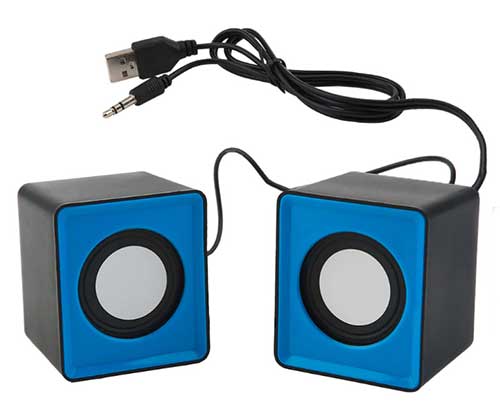
| Description | Otherwise also known as computer speakers or 2.0 speakers… A common Joe that you will find everywhere. |
| Sound Quality | Varies on the design. But a usual decent computer speaker produces what I will call “average quality sound”. It does not make your ears bleed, but don’t expect too much from it either. |
| Advantages | Simple, affordable, plug-and-play. It just works, fuss-free. Kind of portable too. |
| Disadvantages | Average performance, and requires an additional power source. While you can plug in a power bank, these are just not as portable. |
2) SURROUND SOUND SPEAKERS
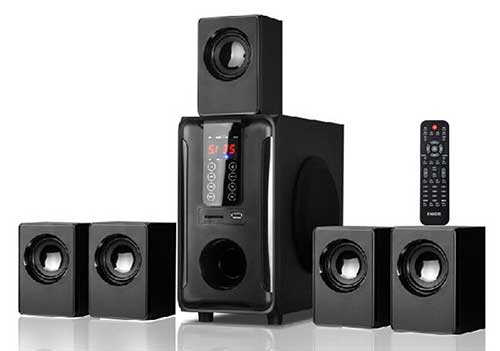
| Description | Otherwise also known as 5.1, 7.1, or 9.1 speakers – Depending on the number of speakers that are in the collection… I personally just call it “a lot of speakers”. |
| Sound Quality | As the name implies, this one offers surround sound. Much better than the basic 2.0. |
| Advantages | Good sound quality, interesting surrounding effect. |
| Disadvantages | Requires a lot of space, time to set up and configure. |
3) SOUNDBAR
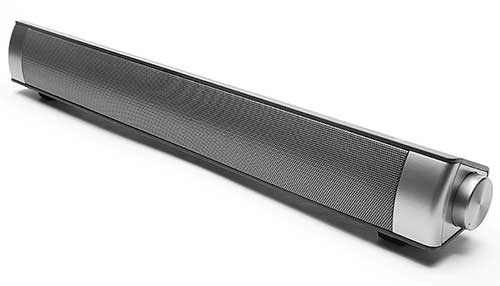
| Description | A slim profile speaker that sits under the monitor. |
| Sound Quality | Offers better sound quality than the original television or monitor… Or it beats the purpose to even buy one of these. |
| Advantages | Pretty good sound quality, slim profile that tucks neatly under the screen. |
| Disadvantages | If your monitor or television is mounted on the wall, you will have to find some way to mount this as well… Usually produces decently good sound, but not excellent. |
4) HOME THEATER
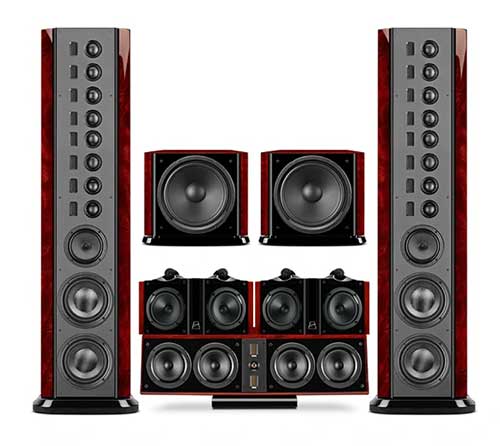
| Description | The nuclear missile of speakers… Home theater sets offer an immersive sound experience. |
| Sound Quality | From good to insanely good. |
| Advantages | Crazy rich sound system. For the people who only want the best sound quality. |
| Disadvantages | Crazy expensive sound system, can be difficult to set up as well. Not for the average Joe. |
5) INTERNAL SPEAKERS
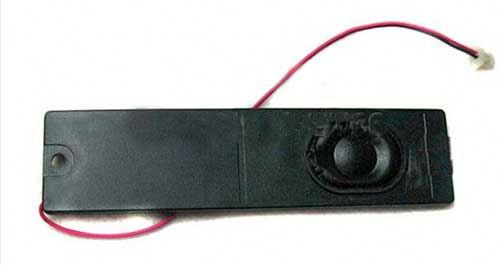
| Description | Well… This is the mini speaker that is built into your laptop, tablet, or smartphone. |
| Sound Quality | Meh. Decent at best. |
| Advantages | Integrated into the device, don’t have to worry about carrying a separate speaker. |
| Disadvantages | Produces sub-standard sound quality. Like it or not, it is stuck inside your device. |
6) PORTABLE SPEAKERS
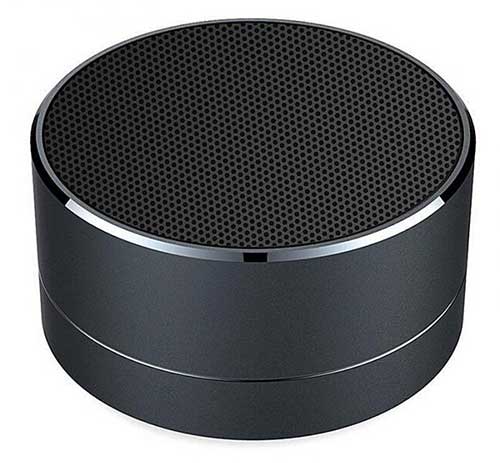
| Description | Following the growth of mobile devices and the discontent for crappy internal speakers – Some smart people put together these portable speakers. With built-in batteries and wireless connections, they offer a convenient and fuss-free way to “up the portable sound game”. |
| Sound Quality | Varies from decent to actually pretty good sound. |
| Advantages | Portable, convenient, better sound quality than built-in speakers. Some portable speakers can even be chained together to form a surround sound system. |
| Disadvantages | Not very powerful by itself. Limited battery life. |
7) BUZZER
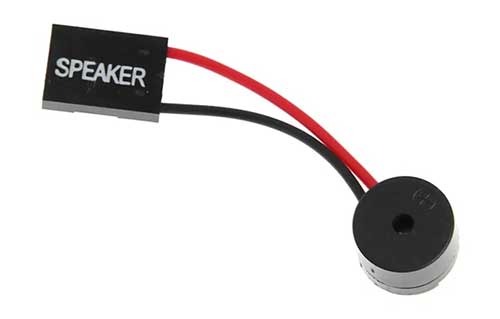
| Description | I just had to add this easter egg of speakers to the basket. You will find this mostly on desktop computers only. |
| Sound Quality | Serves warning beeps and alarm buzzes only. |
| Advantages | Lets you know when something goes wrong with your computer… |
| Disadvantages | No other uses, except to serve audio alarms. |
SPEAKER ANATOMY

Now that we are done with the types of speakers, here is a section of information for those of you who want to know a little more about speakers in-depth.
SOUND RANGE
When it comes to the world of sound, some crazy scientist, sound engineer, or audiophile will start to talk in waveforms, hertz, amplitude, vibrations, sine, and cosine… Well, I am no mad scientist, so let me introduce sound in a layman’s way, by dividing it into 3 ranges instead:
- High – The high-pitched sounds, annoying sharp noises that cause bleeding ears, and old-school comical glass shatter. For example, cymbals and singing bowls.
- Mid – The range of sounds that we are “normally used to”. For example, human speech, piano, and guitar.
- Low – Those deep booms, and overly dramatic movie trailer narrator. For example, bass and oboe.
TYPES OF DRIVERS
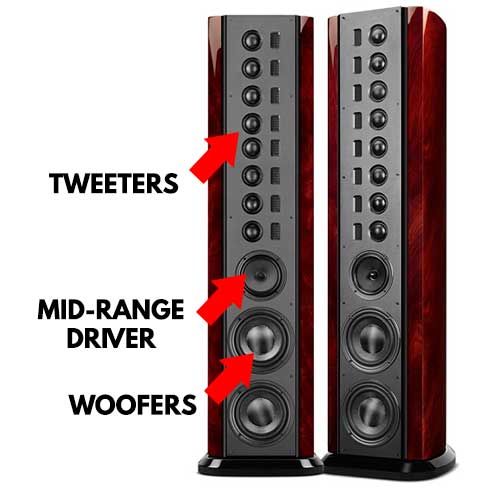
So what the heck is the purpose of explaining the sound range? If you look at some of the more “professional” speakers, you will notice that there are variously sized “smaller speakers” within. Those are called drivers, and each of them is better at producing a different range of sound.
- Tweeter – The small little ones. Yep, tweeter as in “birds making high-pitched tweets”. That is exactly what the tweeters do, deal with the higher sound ranges.
- Mid-range – The “usual” human voices, guitars, pianos, etc…
- Woofers – Good at dealing with the deep lower sound ranges.
- Sub-woofer – This is a type of woofer, but not quite a “full woofer”.
- Full-range – Jack of all trades, master of none. Decently good all around.
Now that you know, you can pretty much guess what kind of sound speakers can produce.
2.0, 2.1, 5.1, 7.1 – WHAT DO THEY MEAN?
In the above types of speakers, I have mentioned 2.0, 2.1, 5.1, and so on… What do these numbers mean? They are actually a common way to describe a surround sound system.
- The first number is the number of satellite speakers the system has.
- Followed by the number of woofers/sub-woofers.
So for example, 2.0 will mean just 2 satellite speakers, no woofers. 5.1 will mean 5 satellite speakers with a single woofer.
TYPES OF PLUGS
3.5MM AUDIO JACK
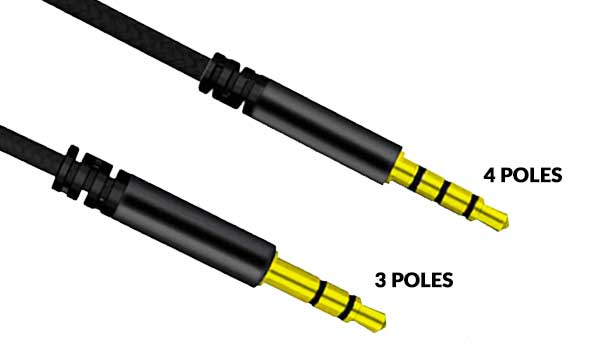
Not a surprise, and you should have seen this everywhere already. But what some people do not notice, is the number of poles. The usual earphones/headphones/speaker jack has “2 black stripes”, while the ones used for smartphones have “3 black stripes” – That extra pole is used for the microphone.
OPTICAL AUDIO JACK
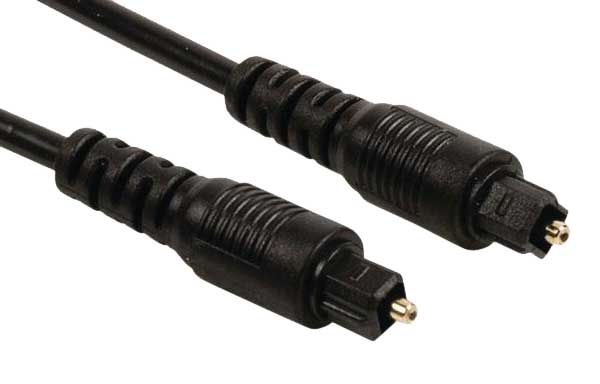
This is an uncommon breed that uses light to transmit audio data instead of electrical signals. Optical is better as some say, but it is also more expensive…
POWERED VS NON-POWERED SPEAKERS
By default, the 3.5mm audio jack will provide a little bit of power. That is why we do not need an extra power source for our headphones and earphones. But this power is not enough to drive those insanely big speakers, and why we need to have powered speakers – Speakers with an additional power plug or USB cable.
USEFUL BITS & LINKS

That’s all for this guide, and here is a small section on some extras and links that may be useful to you.
LINKS & REFERENCES
- Understanding Speaker Specifications – Sound On Sound
- Guide to buying speakers – Tech Sounded
THE END

Thank you for reading, and we have come to the end of this guide. I hope that this has helped you to better understand computer speakers, and if you have anything to share with this guide, please feel free to comment below. Good luck and happy computing. May the cyber force be with you.
